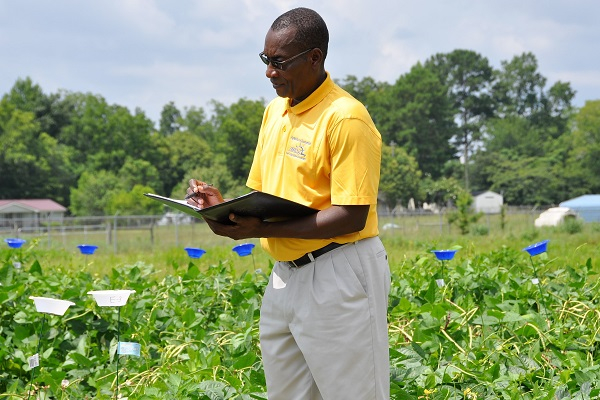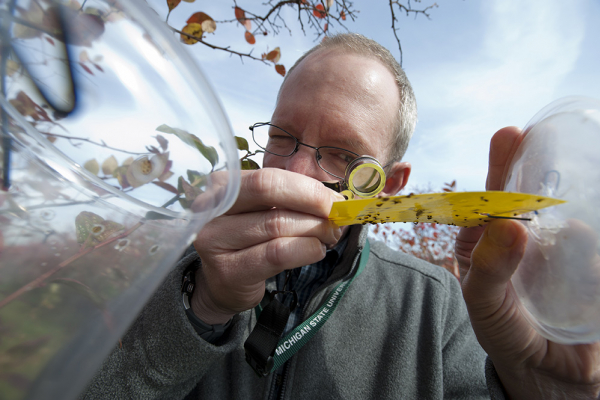Saving Soybeans

The total value of the U.S. soybean crop was $41 billion in 2016 according to the American Soybean Association. Soybean is heavily impacted by root and stem rot diseases caused by oomycete pathogens, fungal-like microbes that cause highly destructive plant diseases and plague almost every type of row crop grown. Oomycetes, which contain hundreds of species, along with the rest of the plant pathogens, are estimated to cost billions of dollars in crop losses annually. A type of oomycete, Phytophthora sojae, is one of the most disruptive pathogens in soybean fields across our nation.
USDA funded a multi-disciplinary team of researchers to combat oomycete diseases. Virginia Tech led the challenge in collaboration with 19 universities including Michigan State University, University of Georgia, Iowa State University and others. The team harnessed genomic advances to develop new diagnostic tools, identify genes for breeding disease-resistant soybeans, and manage the pathogen.
New tools to decode oomycete genomes were recently reported by Virginia Tech’s David Haak and John McDowell. They proved that combining two generations of genomic sequencing technology has immense advantages. Using first-generation technology, it takes one-and-a-half years and around $2 million to sequence the P. capsici (an oomycete) genome. By combining technologies, it takes just nine days, only costs $1,000, and can sequence 100,000 times more information in roughly 1.5 percent of the time.
Preliminary estimates by agricultural economists suggest that these and other tools to fight oomycetes could generate billions of dollars in savings globally.


